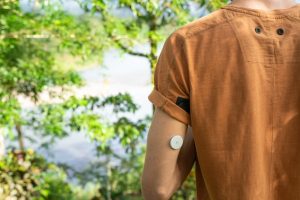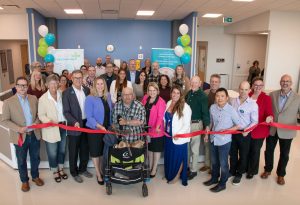Innovative Medical Devices: Addressing Antimicrobial Resistance

These past few years, we have seen remarkable technological advances, particularly in healthcare with the development of innovative medical devices. With the growing threat of antimicrobial resistance (AMR), near-patient testing (NPT) has emerged as a potentially valuable tool for streamlining traditional laboratory diagnostic pathways. Devices which enable NPT could play a pivotal role in optimizing acute care by quickly informing clinical decisions in intensive care units (ICUs) and emergency departments (EDs), where timely, accurate information is essential. In the meantime, by reducing results turnaround time (TAT), NPT could help reduce the overuse of broad-spectrum antibiotics — a key driver of AMR. A critical question remains – why hasn’t NPT been implemented yet?
Current State of Diagnostics and the Role of NPT in Acute Care Currently, diagnosing infections often involves lengthy processing times, which are as much a result of traditional laboratory techniques as the centralization of diagnostic networks across the country. This implies that after collecting a sample, it must be sent outside the care unit and, sometimes, outside the healthcare establishment if it lacks a laboratory. This drastically increases the wait time to receive key information that helps to make critical medical decisions. During this waiting period, clinicians often resort to empiric, broad-spectrum antibiotic treatments, which, while potentially lifesaving, may not be optimal and contribute to AMR.
Near-patient testing, enabled by technologies like rapid antigen tests and certain molecular diagnostic platforms, has shown promise in substantially reducing TATs. For instance, molecular rapid point-of-care tests (POCTs) in EDs can quickly determine bacterial versus viral infections, guiding antibiotic prescribing decisions with greater precision. In ICUs, where the stakes are especially high, NPT can inform early intervention strategies, especially for sepsis, where swift, targeted treatment is critical.
How could NPT impact patient care? The urgency characteristic of so many critical care cases highlights the potential impact of NPT. In the ICU, assessing antimicrobial resistance patterns in real-time to inform drug selection is especially challenging, as resistance profiles are becoming increasingly complex and unpredictable. For instance, identifying multidrug-resistant organisms (MDROs) early could allow for targeted therapy, improving patient outcomes and preserving antibiotic efficacy.
Similarly, for patients presenting in the ED with symptoms of sepsis—a condition with a high risk of rapid deterioration—traditional diagnostic delays can lead to broad-spectrum antibiotic use, which, while lifesaving, may be suboptimal. Rapid NPT can help identify sepsis-causing pathogens in real-time, enabling more targeted and conservative antibiotic use. However, despite these advantages, implementation challenges persist, particularly in ensuring that NPT tools meet quality and biosafety standards, remain user-friendly for clinical staff, and are adaptable across diverse healthcare settings.
Pathways to Market and Implementation Hurdles Navigating the regulatory and procurement pathways for NPT is complex. In Canada, healthcare technology assessments (HTAs) evaluate diagnostic solutions on safety, efficacy, and cost-effectiveness, with distinct processes across provinces and healthcare systems. Unlike pharmaceuticals, diagnostic devices often face different reimbursement and access barriers, impacting the speed and scale of adoption. For instance, hospitals may vary in their ability to procure and deploy NPT devices, leading to disparities in diagnostic availability and quality of care across regions.
Implementation also involves addressing practical concerns. NPT devices require calibration and quality oversight by laboratory specialists to ensure accuracy, as well as operator training on their use and ongoing maintenance. Samples used for NPT are typically single-use, so repeat sampling for confirmatory testing can add logistical burdens in resource-constrained facilities. Furthermore, time-pressed nurses and clinicians in the ED may face workflow disruptions, underscoring the importance of usability and staff training.
The need for near-patient testing in acute care is clear: it can enable faster, results-based interventions, reduce unnecessary antibiotic use, and help slow the progression of AMR. However, making NPT widely available and operational in ICUs and EDs requires overcoming regulatory and operational barriers. Ongoing R&D in this area promises solutions to many of these challenges, but multi-stakeholder collaboration—from healthcare providers to policymakers and technology developers — is essential to accelerate progress.
bioMérieux Canada is hosting the 2024 instalment of its AMR Symposium at the Sheraton Centre in Toronto on November 19th and 20th. This event will offer a timely platform for these discussions. Our panel “Implementation of Near-Patient Testing: What is Needed to Optimize Acute Care?” will delve into real-world cases, address current limitations, and explore what is needed to make NPT a standard tool in acute care. By optimizing NPT deployment, we can take a meaningful step forward in combating AMR and improving outcomes in critical care settings.








